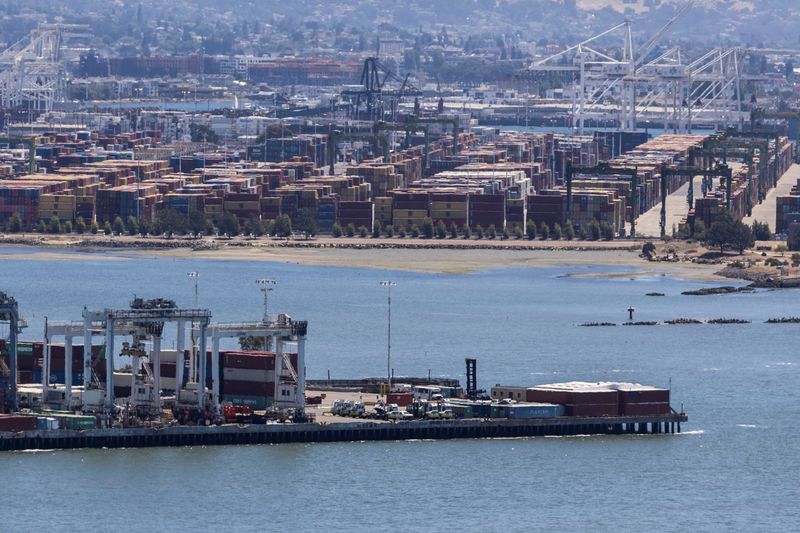By Lucia Mutikani
WASHINGTON (Reuters) -U.S. import prices fell for a second straight month in June as an increase in the cost of fuels was more than offset by declines elsewhere, the latest indication that inflationary pressures in the economy are abating.
The report from the Labor Department on Friday followed on the heels of news this week that consumer prices and producer prices rose moderately last month.
Though inflation remains above the Federal Reserve's 2% target, easing price pressures have left most economists believing that an expected interest rate hike this month would be the last in the U.S. central bank's fastest monetary policy tightening cycle since the 1980s.
"The inflation pipeline is clearing up," said Jeffrey Roach, chief economist at LPL Financial in Charlotte, North Carolina. "Investors should expect the Fed in the upcoming meeting to acknowledge the continued improvement in pricing dynamics across the domestic economy."
Import prices dropped 0.2% last month. Data for May was revised to show import prices declining 0.4% instead of the previously reported 0.6%. Economists polled by Reuters had forecast import prices, which exclude tariffs, would dip 0.1%.
In the 12 months through June, import prices tumbled 6.1%. That was the biggest year-on-year decline since May 2020 and followed a 5.7% drop in May.
Annual import prices have now decreased for five straight months. The Fed, which has hiked its benchmark overnight interest rate by 500 basis points since March 2022, skipped a rate hike at its policy meeting last month.
Imported fuel prices rebounded 0.8% last month after dropping 4.3% in May. Petroleum prices rose 1.1%, while the cost of natural gas fell 5.6%. Imported food prices decreased 0.3%.
Excluding fuels and food, import prices declined 0.4%. These so-called core import prices were unchanged in May. Core import prices decreased 1.5% on a year-on-year basis in June. They have remained subdued even as the dollar has weakened against the currencies of the United States' main trade partners this year.
"The Fed has gained an ally in its inflation fight despite dollar strength turning to dollar weakness," said Christopher Rupkey, chief economist at FWDBONDS in New York. "Import prices are subtracting from the pernicious trend of the goods inflation Americans have been paying."
Prices for imported capital goods slipped 0.1% in June. The cost of consumer goods excluding motor vehicles dropped 0.3%.
Prices of imported goods from China fell 0.4% for the third straight month, led by a 0.7% decrease in prices for computer and electronic product manufacturing. Chinese import prices were down 2.3% on a year-on-year basis, the biggest drop since November 2009.
The import price deflation also suggests the economy is slowing. The report also showed export prices fell 0.9% in June after plunging 1.9% in May. Prices for agricultural exports declined 1.6% as lower prices for soybeans, fruit and nuts more than offset higher meat prices.

Nonagricultural export prices fell 0.9%. There were decreases in the cost of nonagricultural industrial supplies and materials as well as nonagricultural food, which canceled out rises in prices for capital goods, consumer goods and motor vehicles.
Export prices plummeted 12.0% on a year-on-year basis in June, the biggest annual decrease since the government started tracking the series in September 1984, after falling 10.2% in May.